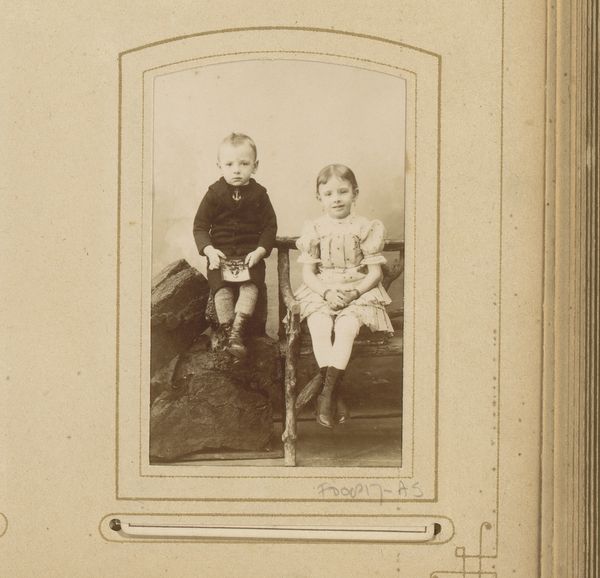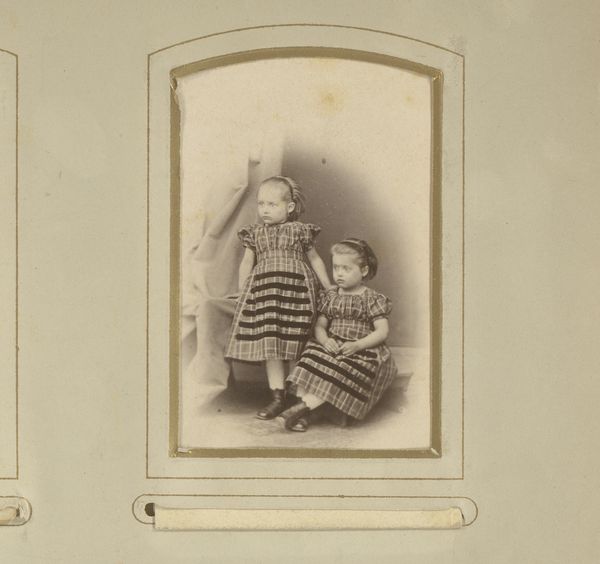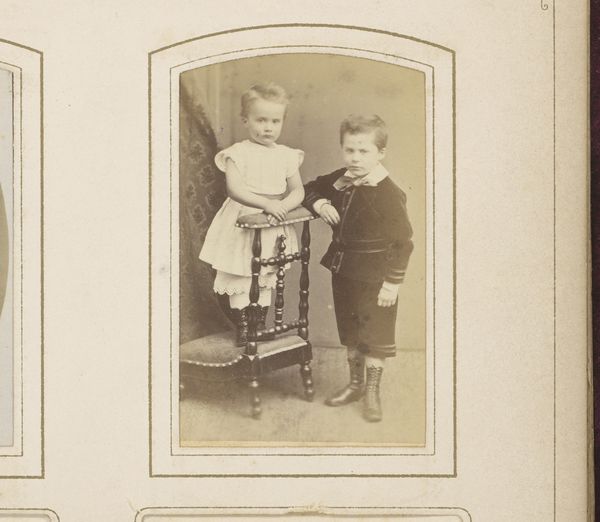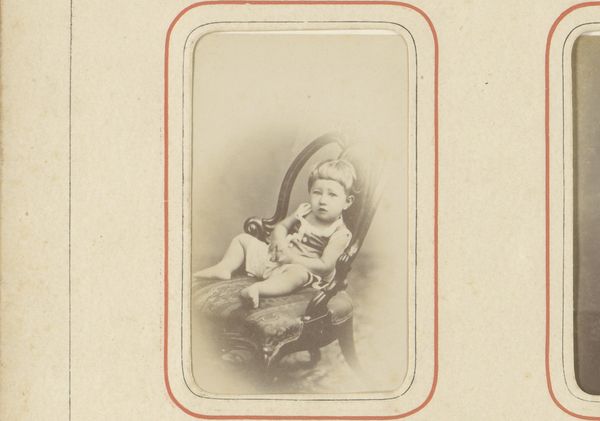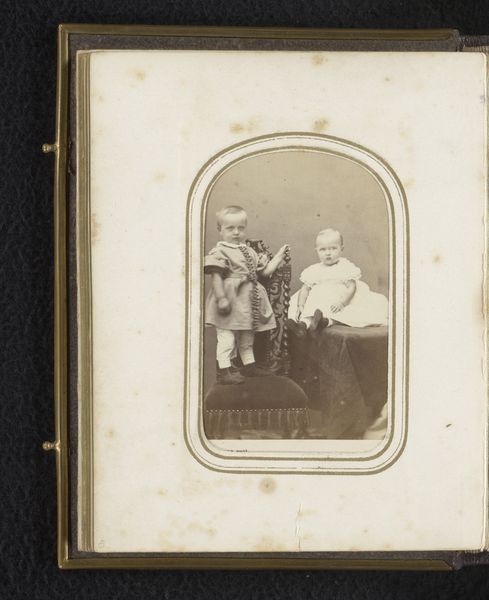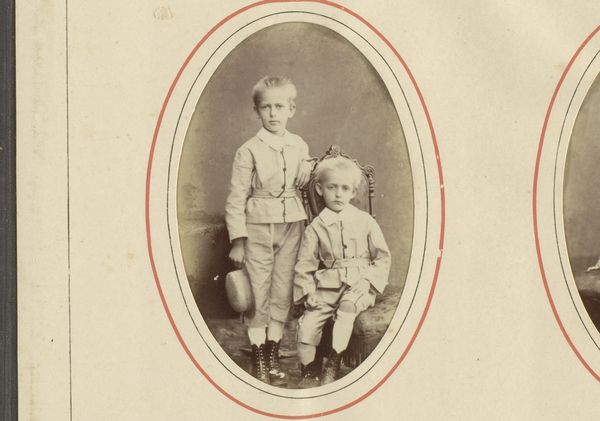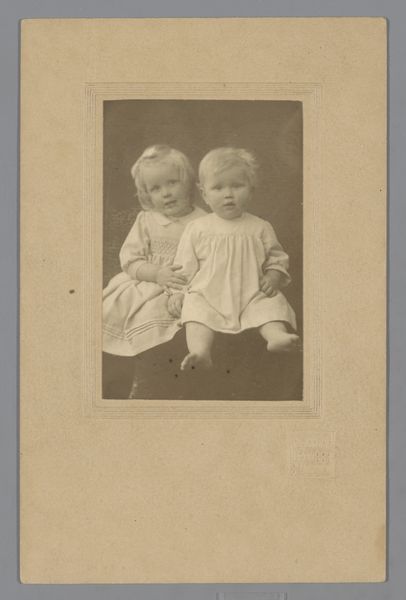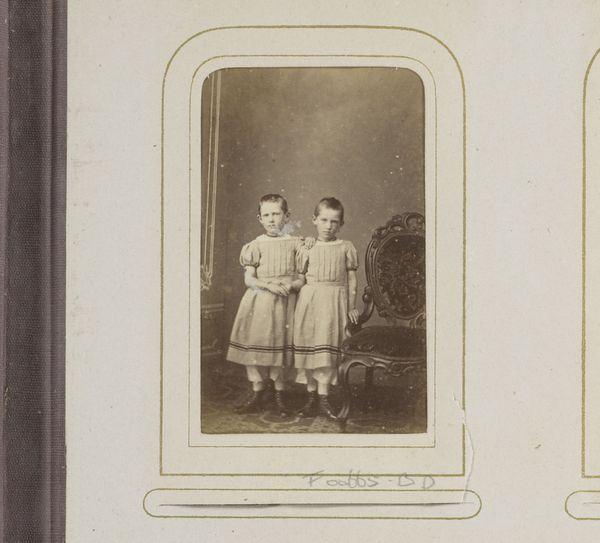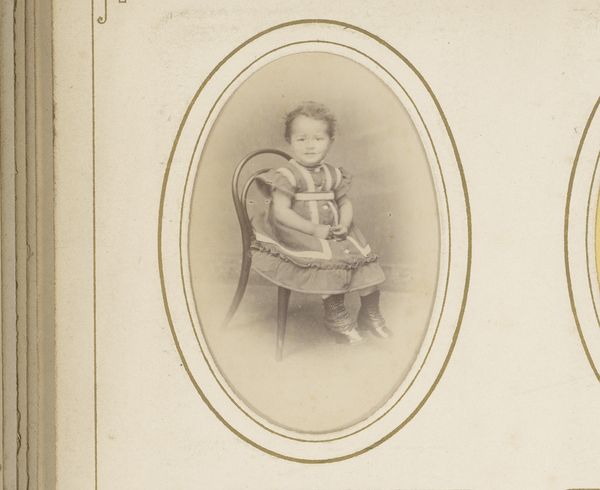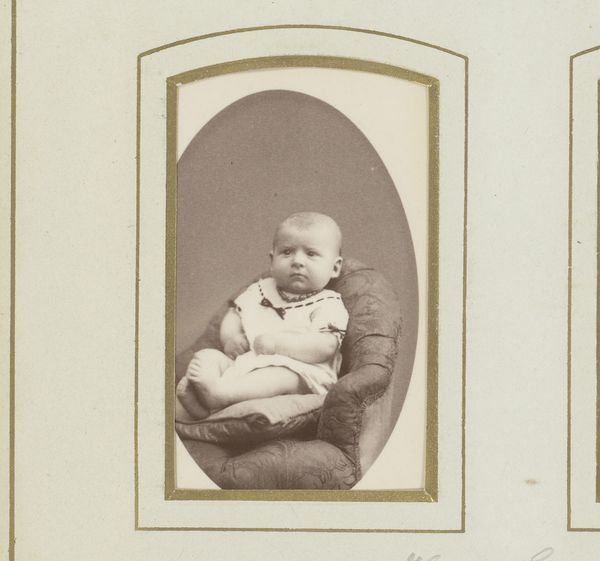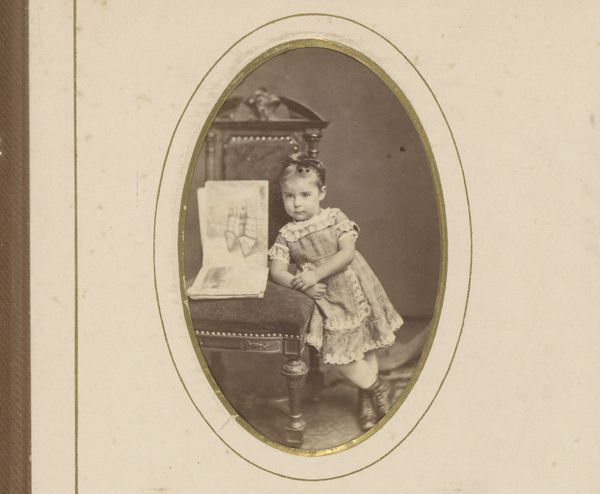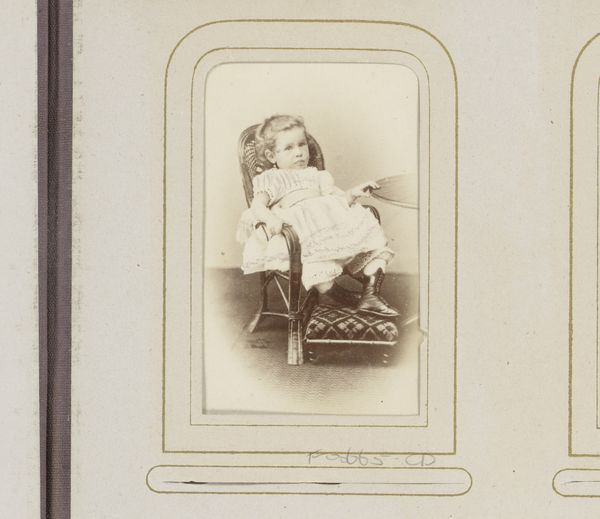
Portret van een jongen en een meisje, tegen elkaar zittend op een stoel 1878 - 1885
0:00
0:00
#
aged paper
#
toned paper
#
homemade paper
#
photo restoration
#
parchment
#
warm toned
#
warm-toned
#
golden font
#
watercolor
#
historical font
Dimensions: height 82 mm, width 52 mm
Copyright: Rijks Museum: Open Domain
Curator: Looking at this intimate photograph, I’m immediately drawn to the palpable tenderness and also hints of forced pose in the stiff bearing of the children. Editor: Intimate is a great descriptor. The way the oval frame confines the two figures really focuses my attention. It amplifies the subtle contrasts, particularly how their expressions pull you in opposite directions. Curator: This albumen print, titled “Portrait of a Young Boy and Girl Seated Together in a Chair,” comes to us from the studio of Eugene Guérin. Its creation dates back to somewhere between 1878 and 1885, and exists now within a private collection. What draws your eye from a strictly formal point of view? Editor: The warm tones immediately caught my attention, but also the use of light. Observe how the light gently grazes their faces, yet also creates a clear delineation between the foreground and the blurry, anonymous figure looming behind them. It gives depth, but it also suggests the external forces pressing upon childhood innocence. Curator: The way you phrase that resonates with what I know of Guérin's commercial success as a portraitist among the bourgeoisie. A formal photograph such as this would act as both familial memento, and also statement piece of status. These children, presented so deliberately, adhere to the strict conventions of dress and presentation that were a signifier of middle-class respectability. Editor: The material qualities amplify that sense of distance, paradoxically. This photograph looks so fragile now – aged paper, a faint sepia tone; it transforms the children into distant, almost spectral figures. They look less like portraits and more like archetypes that transcend historical specificity. Curator: Absolutely, and consider the placement within an album. Photographs became readily accessible during the late 19th century, creating new, powerful methods for consolidating power and also solidifying shared public memory. To reflect, I find that this specific portrait, through a lens of formality and deliberate staging, echoes themes of controlled presentation intertwined with societal expectations. Editor: Yes. From a formal perspective, and when viewing that historical placement, the simplicity of composition creates an evocative power that bridges that gap between societal intention, artistic vision and human presence that has persisted for well over a century.
Comments
No comments
Be the first to comment and join the conversation on the ultimate creative platform.

